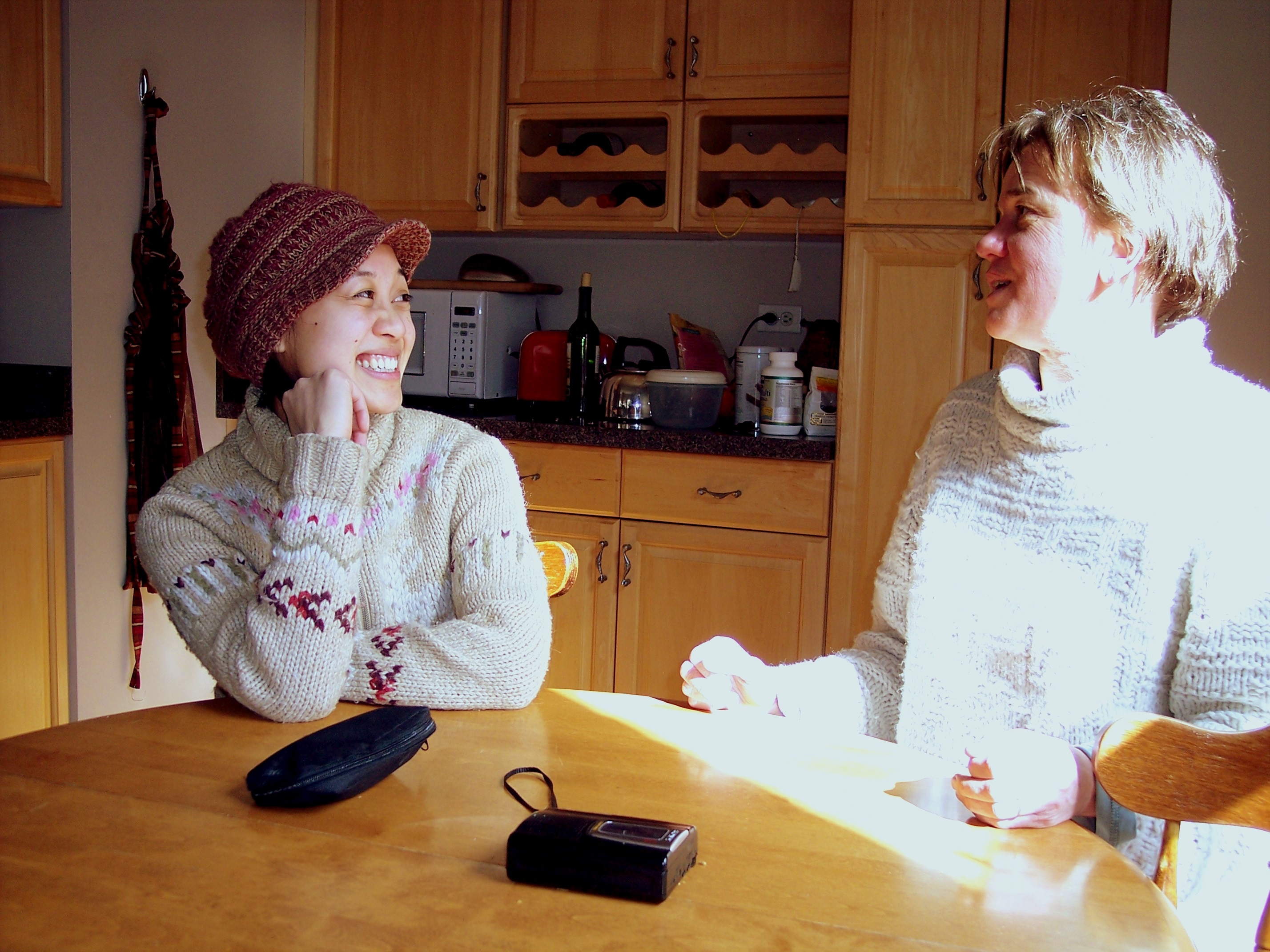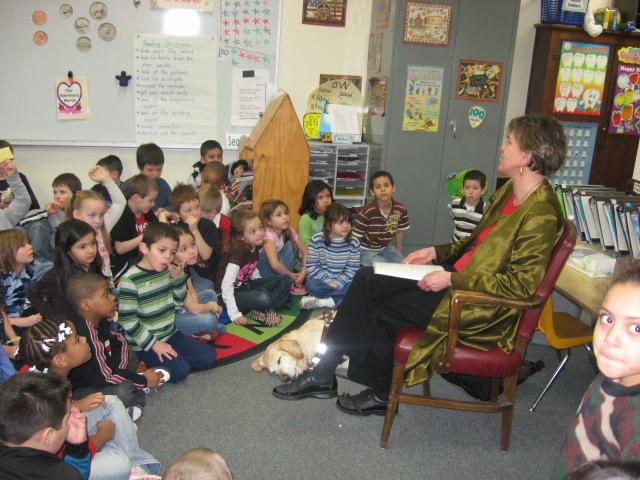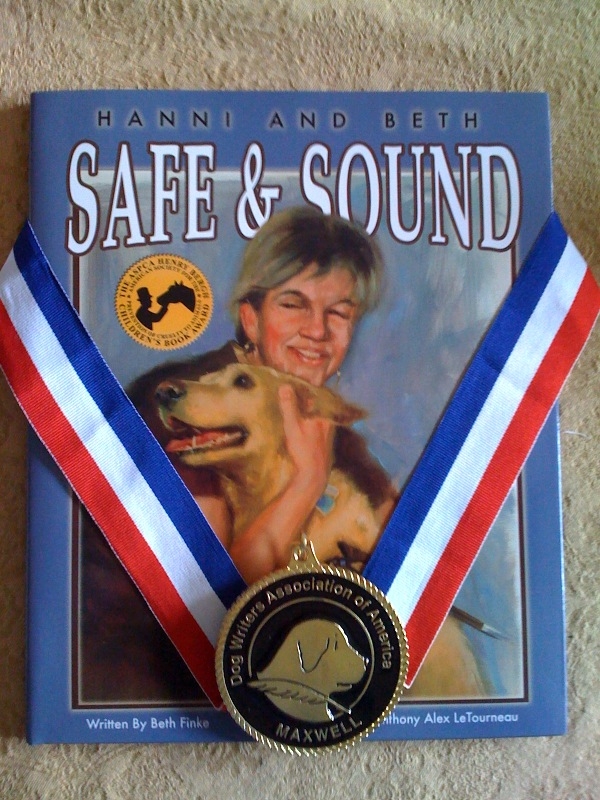Desperate Housewife
March 3, 2009 • 8 Comments • Posted in Beth Finke, blindness, Uncategorized
That's Emjoy Gavino on the left. To prepare for her role as Susy in "Wait Until Dark," she hung out with me at our place to get an idea of how I navigate and get things done around the house.
Emjoy Gavino is coming over today. You might remember Emjoy from that post I wrote about the upcoming production of Wait Until Dark at Court Theatre in Chicago. Emjoy has the Audrey Hepburn (Susy) role — she’ll play a newly-blind woman in the play.
I can get a little nervous when I know people are going to be stopping by. I’m a lousy housekeeper. This has little to do with me being blind — a lot of people who can’t see keep immaculate houses, I’m just not one of those people. I never liked cleaning house when I could see, and trust me — things didn’t get better after I lost my sight.
Right at this moment, for example, I should be straightening out the apartment for Emjoy’s visit. And what am I doing instead? Working on my blog!
An entire chapter of my memoir, Long time, No See is devoted to the tricks I use to do things without being able to see — let me see if I can find that chapter. I’m at my talking computer. I hit the letter “h” on my keyboard. The robotic voice calls out a file that starts with “h.” Hanni retires.” Nope. I hit the down arrow. Herb bread recipe, hospice essay, hospital. I keep hitting the down arrow. How We Do it. That’s it! Hit enter. The file opens. Hit “control f4” to do a search. I don’t have a special Braille keyboard — I took typing in high school and still have the letters memorized. The talking computer parrots the letters as I type, so I can hear if I’ve made a mistake.
H-o-u-s-e-c-l-e-a-n-i-n-g Brrring! That little doorbell-sounding chime rings out. My computer starts barking. “Microsoft Word Dialogue,” it shouts to me in that robotic voice. “Word has finished searching the document. The search item was not found. Okay?”
Of course it’s okay. “Okay” is the only option. I try again. Simplify it. C-l-e-a-n-I-n-g. Brring! The robotic shouting. Search item not found.
My God. I thought my poor housekeeping skills were at least kinda sorta a little bit of a joke. But it must be true! That “How We Do It” chapter has sections on how I use a talking computer to write, how I read books, how I measure insulin, how I do laundry, how Hanni and I get through security at airports. Nary a mention of how I clean house. All I can figure is that the editors and I must have decided a three-word “housecleaning” section would be too short to publish: Mike. Does. It.
Mike won’t be home today when Emjoy comes, but you know what? I’m not worried! Emjoy is coming here as part of her research — she wants to observe how I get around the apartment on my own without being able to see. So I figure it makes sense to leave it a mess — Emjoy can watch me attempt to straighten up!


